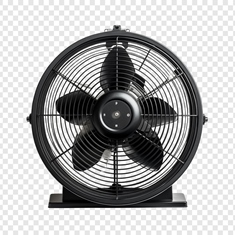In the dynamic landscape of modern kitchens, where culinary creativity meets the demands of efficient ventilation, kitchen exhaust fans play an indispensable role. For homeowners and chefs alike in Kerala, understanding the intricacies of kitchen exhaust fan size charts is paramount to achieving optimal air quality, comfort, and safety within the culinary space. In this comprehensive guide, we delve into the specifics of kitchen exhaust fan sizing, tailored to the unique needs and environmental considerations of Kerala.
Importance of Proper Ventilation in Kitchens
Proper ventilation in kitchens is crucial for several reasons. Firstly, it helps to remove airborne contaminants generated during cooking, such as smoke, grease particles, and food odors. Without adequate ventilation, these pollutants can linger in the air, leading to unpleasant smells and potentially harmful indoor air quality. Additionally, effective ventilation helps to control humidity levels, reducing the risk of mold and mildew growth, which can damage surfaces and pose health risks to occupants.
Understanding Kitchen Exhaust Fan Size Charts
Determining Ventilation Needs
Before delving into the nuances of kitchen exhaust fan size charts, it’s essential to assess the ventilation requirements of your kitchen space. Factors such as kitchen size, cooking frequency, and the types of appliances utilized all influence the necessary airflow for effective ventilation. In Kerala’s tropical climate, where high temperatures and humidity levels prevail, adequate ventilation becomes even more critical to maintaining a comfortable and hygienic cooking environment.
Considering Ductwork and Installation
In addition to selecting the right kitchen exhaust fan size, attention must also be given to the design and installation of ductwork. Proper ductwork ensures efficient airflow and minimizes resistance, allowing the exhaust fan to function optimally. In Kerala’s humid climate, it’s imperative to employ duct materials that are resistant to moisture and corrosion, such as galvanized steel or aluminum. Additionally, professional installation by experienced technicians ensures that the exhaust fan operates seamlessly, maximizing its effectiveness and longevity.
Selecting the Right Fan Size
Selecting the right fan size for your kitchen is crucial to ensure effective ventilation and optimal performance. To simplify the process, we’ve created a handy table that correlates kitchen size with recommended fan CFM (cubic feet per minute) ratings. Use this table as a guide to determine the appropriate fan size for your specific kitchen dimensions.
| Kitchen Size (Square Feet) | Recommended Fan CFM |
| Up to 75 | 150-250 |
| 76-100 | 250-400 |
| 101-150 | 400-600 |
| 151-200 | 600-900 |
| 201-300 | 900-1200 |
| 301-400 | 1200-1600 |
| 401-500 | 1600-2000 |
| Over 500 | Consider Multiple Fans for Optimal Ventilation |
Determine Your Kitchen Size: Measure the square footage of your kitchen area. Include all areas where cooking activities take place, including dining spaces if they are open-concept.
Find the Recommended Fan CFM Range: Locate the row in the table that corresponds to your kitchen size. The table provides a range of recommended CFM ratings based on the square footage.
Choose the Appropriate Fan Size: Select a fan with a CFM rating within the recommended range for your kitchen size. If your kitchen falls between two size categories, opt for the higher CFM rating to ensure sufficient ventilation.
Consider Multiple Fans for Larger Kitchens: For kitchens larger than 500 square feet, it may be beneficial to install multiple exhaust fans strategically placed to ensure comprehensive ventilation coverage.
By following this table, you can confidently select the right fan size for your kitchen, ensuring efficient ventilation and optimal air quality for your culinary endeavors.
Factors Influencing Fan Size Selection in Kerala
Climate Considerations
Kerala’s tropical climate, characterized by high temperatures and humidity levels throughout the year, poses unique challenges to kitchen ventilation. In such environments, selecting a kitchen exhaust fan size that provides ample airflow to remove excess heat and moisture is essential. A fan with a higher CFM rating may be required to effectively combat the effects of Kerala’s climate, ensuring a comfortable and conducive cooking environment.
Cooking Habits and Appliances
The frequency and intensity of cooking activities, as well as the types of appliances utilized, significantly influence the ventilation requirements of a kitchen. In Kerala, where traditional culinary practices often involve the use of aromatic spices and deep frying techniques, effective ventilation becomes even more critical. Larger kitchen exhaust fan sizes may be necessary to accommodate the increased airflow needed to eliminate cooking odors and grease particles effectively.
Kitchen Layout and Design
The layout and design of the kitchen space also play a pivotal role in determining the appropriate kitchen exhaust fan size. Larger kitchens with open floor plans or multiple cooking stations may require fans with higher CFM ratings to ensure uniform airflow and thorough ventilation. Conversely, smaller kitchens or those with limited ventilation options may benefit from compact exhaust fans that offer efficient performance without compromising on space or aesthetics.
FAQs Section
Determining if your kitchen exhaust fan is the right size involves assessing its ability to effectively remove airborne pollutants, excess heat, and moisture from your kitchen space. If you notice lingering cooking odors, moisture buildup, or inadequate ventilation despite the fan being in operation, it may indicate that the fan is undersized for your kitchen. Consider referring to a kitchen exhaust fan size chart or consulting with a ventilation expert to evaluate whether your current fan meets the ventilation requirements of your kitchen.
Regular cleaning of your kitchen exhaust fan is essential to maintain its efficiency and prevent buildup of grease, dust, and other debris that can hinder its performance. A general recommendation is to clean the fan and its components, including the blades, housing, and filters, at least once every three to six months. However, frequency may vary depending on factors such as cooking frequency, types of dishes prepared, and environmental conditions. Inspect the fan regularly and clean it as needed to ensure optimal performance and longevity.
While some homeowners may have the skills and knowledge to install a kitchen exhaust fan themselves, it is generally recommended to seek professional assistance, especially for complex installations or if you are unsure of your abilities. Professional installers have the expertise and experience to ensure the fan is properly sized, installed, and vented according to local building codes and safety standards. Additionally, hiring a professional can help minimize the risk of installation errors and ensure the fan operates efficiently from the start.
Several signs indicate that your kitchen exhaust fan may require maintenance or repair:
Reduced Airflow: If you notice a decrease in airflow or weak suction from the exhaust fan, it may indicate a clogged filter, obstructed ductwork, or a malfunctioning motor.
Loud or Unusual Noises: Unusual sounds such as grinding, rattling, or squealing coming from the fan motor or blades may indicate worn bearings, loose components, or other mechanical issues.
Excessive Grease Buildup: A visible buildup of grease on the fan blades, housing, or surrounding surfaces may impede airflow and increase the risk of fire.
Foul Odors: Persistent odors or smells emanating from the fan may indicate a buildup of debris or mold within the unit, requiring thorough cleaning and disinfection.
Visible Damage: Cracks, dents, or other visible damage to the fan housing or components may compromise its structural integrity and effectiveness.
If you observe any of these signs, it’s essential to address them promptly to prevent further damage and ensure the continued operation of your kitchen exhaust fan.
To enhance the efficiency of your kitchen exhaust fan, consider the following tips:
Clean Regularly: Clean the fan blades, housing, and filters regularly to remove grease, dust, and debris that can obstruct airflow.
Upgrade to High-Efficiency Filters: Replace standard filters with high-efficiency filters designed to capture more airborne particles and improve air quality.
Optimize Ventilation System: Ensure that the exhaust fan is properly vented to the outside to minimize backdrafts and maximize airflow.
Use as Needed: Use the exhaust fan whenever cooking to remove cooking odors, excess heat, and moisture from the kitchen space.
Maintain Surrounding Surfaces: Keep surrounding surfaces clean to prevent grease buildup, which can impede airflow and reduce fan efficiency.
Conclusion
In the realm of kitchen ventilation, selecting the right exhaust fan size is crucial to maintaining a clean, comfortable, and healthy cooking environment, especially in a region like Kerala with its unique climate and culinary traditions. By understanding the principles outlined in kitchen exhaust fan size charts and considering factors such as ventilation needs, climate conditions, and cooking habits, homeowners and chefs can make informed decisions that optimize air quality and enhance overall kitchen functionality.











Find Us on Socials